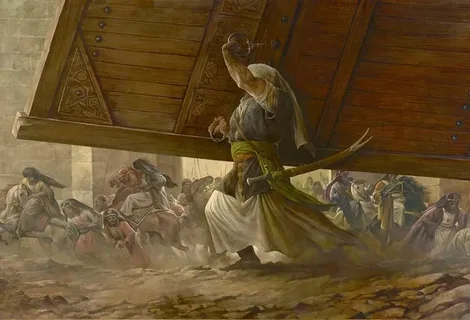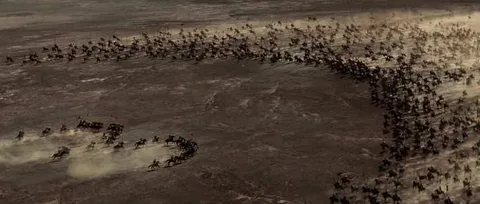The Battle of Khaibar, fought in the year 7 Hijri (approximately 628 CE), was a crucial confrontation between the early Muslim community led by Prophet Muhammad (peace be upon him) and the Jewish tribes settled in the fortified oasis of Khaibar, north of Medina. This battle was important not only for its military outcome but also for its political and social consequences which shaped the future of the nascent Islamic state.
The Battle of Khaibar
-
Location and Political Context: Khaibar was an oasis complex controlled mainly by Jewish tribes who had significant influence over trade routes and harbored adversarial relations with the Muslims of Medina.
-
Prior Conflicts: The Jewish tribes around Medina, including those in Khaibar, had opposed and allied with enemies of Islam, engaging in conspiracies and military threats to the Muslims.
-
Strategic Importance: Controlling Khaibar was vital for securing Medina’s northern borders and ensuring safety from hostile incursions.
Read more: The battle of Al-Khandaq (5 Hijri)
Forces and Preparations

Muslim Army
- Composed of approximately 1,400 to 1,800 soldiers.
- Commanded by Prophet Muhammad who planned a coordinated attack to capture the fortress strongholds.
Jewish Defenders
-
Settled primarily in several well-fortified fortresses within the oasis.
-
Led by skilled warriors such as Marhab and other tribal leaders.
-
Expected a smaller Muslim force but were taken aback by the size and tactics.
Recommend: The battle of That Al-Reqaa’ (4 Hijri)
The Course of the Battle
Initial Muslim Strategy
- Muslims marched toward Khaibar using unconventional routes to avoid detection and reinforcements from allied tribes.
- The siege began in early Muharram (7 Hijri) targeting various fortified strongholds one by one
Key Sieges and Engagements
- Early battles were intense, with the Jewish defenders mounting strong resistance and inflicting casualties on the Muslims.
- The fortress of Qamus was a significant stronghold that took lengthy siege efforts to capture.
- Ali ibn Abi Talib played a critical role, leading the vanguard and demonstrating notable bravery and tactical success.
Siege Conditions and Hardships
- Both sides suffered from shortages of food and water.
- Muslims endured harsh conditions, resorting at times to eating donkey meat despite former cultural and religious hesitations
- The siege tactics evolved with the Muslims gradually wearing down the defenders.
Read about: The battle of Bani Lehyan (6 Hijri)
Conclusion of the Battle
-
After days of intense fighting and sieges, the Jewish tribes surrendered.
-
A treaty was made: the Jewish population was allowed to retain their land and continue farming but under Muslim sovereignty, paying a share of their produce (tributary arrangement).
-
This accord allowed lasting peace in the region and avoided further bloodshed.
Aftermath and Legacy
-
The conquest of Khaibar removed a grave threat to the Muslim state.
-
It enhanced the political and economic standing of the Muslims.
-
The poisoning incident: A Jewish woman is reported to have poisoned a piece of meat given to the Prophet, which later afflicted him. This episode is widely narrated in Islamic history.
-
The victory of Khaibar symbolized the rise and consolidation of Muslim power in Arabia.
FAQs
When did the Battle of Khaibar take place?
It occurred in the 7th year of Hijri, around May 628 CE.
Who commanded the Muslim forces during the battle?
Prophet Muhammad led the army, with Ali ibn Abi Talib playing a major role as a commander in key battles.
What made Khaibar strategically important?
Khaibar was a wealthy and fortified oasis controlling trade routes and posed a continual threat to Medina’s safety.
How did the Muslims overcome the fortifications?
Through persistent siege warfare, superior tactics, and leadership, gradually capturing fortress by fortress.
What were the conditions of the peace treaty after the battle?
The Jewish inhabitants were allowed to remain as tenant farmers under Muslim rule, paying a tribute from their produce.
Conclusion
The Battle of Khaibar was a defining episode in Islamic history, showcasing determination, strategy, and leadership under the Prophet Muhammad. Despite formidable defenses and fierce resistance, the Muslims prevailed by adapting their tactics and leveraging the unity and dedication of their forces. The post-battle treaty exemplified political pragmatism and set a framework for coexistence and governance. The success at Khaibar solidified the Muslims’ hold in the Arabian Peninsula and opened avenues for further expansion. The legacy of this battle continues to provide valuable lessons on resilience, leadership, and justice.

